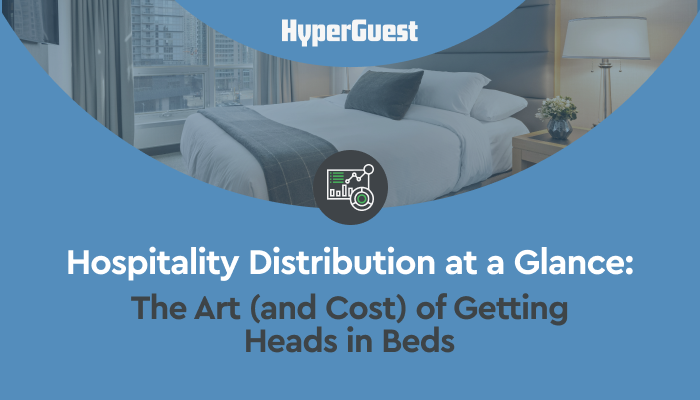A Revolutionary Approach to Changing the Revenue Management Paradigm.
In the dynamic world of hospitality, change is the only constant, and right now, a seismic shift is shaking up the industry's very foundation. Enter the era of Total Revenue: a revolutionary approach that's turning traditional revenue management on its head.
Gone are the days when revenue management solely focused on optimizing room rates and occupancy levels. Today, hospitality leaders recognize the need to capture revenue opportunities across all touchpoints of the guest journey, from accommodations and amenities to food and beverage, spa services, and beyond. This holistic perspective acknowledges that each revenue stream contributes to the overall financial health of the business.
In this transition towards Total Revenue management, it's crucial for hospitality professionals to identify and leverage key performance indicators (KPIs) that accurately measure the performance of various revenue streams.
Here are some essential KPIs to consider in key areas:
Room Revenue
- Average Daily Rate (ADR): Reflects the average revenue earned per occupied room per day, providing insights into pricing strategies and demand fluctuations. Read Starhotels ADR surge case study to learn more.
- Revenue per Available Room (RevPAR): Calculates total room revenue divided by the total number of available rooms, indicating both occupancy and rate performance. Learn more about RevPAR.
Food and Beverage Revenue
- Food and Beverage Cost Percentage: Measures the ratio of food and beverage costs to revenue, highlighting operational efficiency and profitability.
- Average Spend per Cover: Tracks the average amount spent by guests on food and beverage offerings, guiding menu development and pricing decisions.
Ancillary Revenue
- Spa Revenue per Available Treatment Hour: Evaluates the efficiency of spa operations by measuring revenue generated per available treatment hour.
- Retail Revenue per Guest: Assesses the effectiveness of retail offerings in driving additional revenue from guests.
Total Revenue
- Total Revenue per Available Room (TRevPAR): Provides a comprehensive view of revenue performance by including all revenue streams, offering a holistic perspective on profitability.
- Gross Operating Profit per Available Room (GOPPAR): Calculates the profit generated per available room after deducting operating expenses, offering insights into overall financial performance.
By monitoring these KPIs across different revenue streams, hospitality professionals can gain a comprehensive understanding of their business performance and identify opportunities for optimization. Embracing the Total Revenue mindset enables organizations to adapt to changing market dynamics, enhance guest experiences, and drive sustainable growth in today's competitive landscape. Learn more about revenue management KPIs.
The perspective of Pablo Torres
With 20+ years in global hospitality, consults and trains 5-star hotels worldwide, and with a Hotel Management degree and Executive MBA from IE Business School, Pablo leads a hospitality education platform
at teduka.es. 29% of all revenue, on average, comes from different sources besides rooms. That is a chunk too large not to pay attention to it.
However, there needs to be a plan behind it. One can just not expect to get the Front Office team to magically upsell.
First and foremost, we need to have clarity on what we are expecting to get out of our ancillary revenue driving plan. Ideally, it should be a mix of increased customer satisfaction paired with added revenue.
Because the key to higher revenue coming via upsell and cross sell must be 100% customer-centric, so that your customers leave the premises more satisfied having spent more money; as the experience
perceived, the added value was well worth it. With that in mind, agree on what to focus on: room inventory (upsell), F&B storytelling, Spa treatments and products…options are endless.
Once you have that well structured, comes to time to draft a solid incentive plan. Keep in mind that your team will not outperform selling unless they perceive a % out of it. Don’t forget that is a % of the extra
revenue they are generating for you. Which is fair.
And finally, make sure you have the tools -or skilled and committed team members- to track it all in detail, so that you can make the necessary adjustments every now and then to make sure the extra revenue
flow is optimized.
Some further KPI’s highlighted by Pablo:
Food and Beverage Revenue
- RevPASH: Revenue per available seat/hr
- RevPASF/M: seating efficiency
Ancillary Revenue
- ATR: Average Treatment Rate
- SRevPOR: Spa Revenue Per Occupied Room
- TRevPSqm: Total Revenue per square meter
- Productivity per therapist
Events Revenue
- Revenue per square foot/meter
- Attendee density
- Revenue per attendee
Golf Revenue
- RevPaR – Revenue Per Available Round
In conclusion
As the hospitality industry continues to evolve, the shift towards Total Revenue management marks a strategic imperative for success. By prioritizing a holistic approach and leveraging relevant KPIs, businesses can unlock new opportunities for revenue optimization and position themselves for long-term prosperity in an increasingly dynamic market.






.png)



.png)
.jpeg)
.jpeg)
.png)






